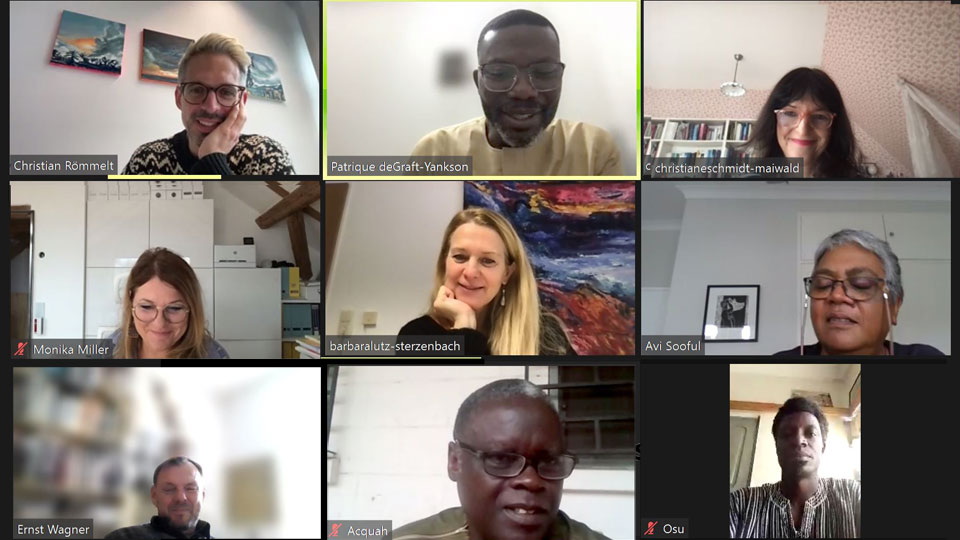Not in the picture: Phillip Schramm, University of Bayreuth
The two teams from Ghana and Germany met together with EVC's chair, Avitha Sooful on Dec 20, 2022, to discuss criteria for the selection of 'objects of reference' for the first prototype (chapter about sustainablility), but also about the leading the ideas how to approach these objects.
The discussion led to the follwong list:
- Types of objects: The broadest range of visual culture will be addressed (handicraft, product design, architecture, communication design, fashion, food, political campaigns, art works ...). The relevance of the objects for the respective communities is the important criterion, not the question of belonging to a specific genre. Objects selected span a certain historical period, including contemporary objects.
- Didactics: To make students feel safe, it would be good to start with objects that are familiar to the students, objects that the students can access spontaneously. But this doesn't mean that objects being somehow bulky and challenging are excluded. (Complexity is in the approach, not in the objects themselves.)
- Perspectives: For the very first phase, objects will be chosen that can be linked to the respective national curricula. This means that the Ghanaians will focus on a Ghanaian perspective, whereas Germans will focus on a German-European perspective, also when it comes to global issues. Bridges between the two perspectives will be developed at the joint workshop in March 2023.
Further aspects
- It is important to address a gender-specific perspective (i.e. making women artists visible, but avavoiding stereotypes).
- It is also very important to focus on potentials for interdisciplinary teaching (in the context of e.g. the STEAM discussion.)
- We will not restrict the selection to a specific theme or a guiding medium nor to a meta-narrative. The latter can e developed from the findings we will have until March 2023.
More about the project: Link

